Advancements and Applications in Resinous Floors and Walls
The thickness of broadcast layers ranges from 1/16 inch to 3/16 inch. As in all flooring systems, the condition of the concrete substrate is critical to the performance of the floor. With its extensive range of finishes and color options, a vinyl flake broadcast system is often specified for decorative finishes. Flakes come in both small and large sizes.
Terrazzo alternatives. A cost-effective alternative to terrazzo is a decorative troweled epoxy mortar system. Recommended for pharmaceutical, research, education, and healthcare applications and used extensively in commercial environments, it is smooth, stain and wear resistant and has low maintenance. Also typically available in decorative custom patterns in an extensive palette, it is, unlike terrazzo, slip resistant. Some decorative epoxy systems utilize recycled glass chips. Typical thicknesses range from 3/16 inch to 1/4 inch.
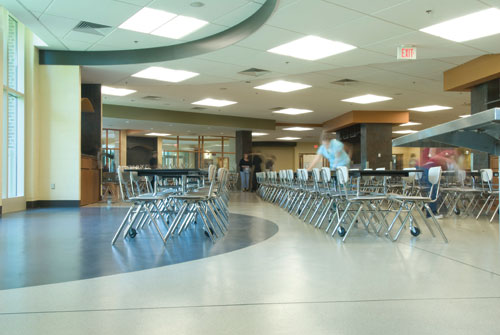 |
This decorative troweled epoxy system in a cafeteria is slip resistant. Photo courtesy of Stonhard |
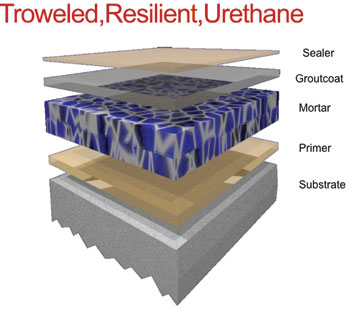 |
Troweled urethane configuration can be highly decorative. |
Troweled resilient urethane. One resinous flooring option with a faster drying time than epoxy is a troweled urethane system, suited for high-profile entertainment, retail, healthcare, and public spaces. With free form and distinctive design capabilities, it competes with vinyl sheeting and carpet. The system is sound absorbent, ergonomic, and stain resistant with a solid, matte finish. Thicknesses range from 1/8 inch to 3/16 inch.
Alternative to stained concrete. A quartz aggregate broadcast system that incorporates decorative stains delivers the look of stained concrete without the drawbacks mentioned above. The 3/32-inch-thick system is durable, UV resistant, slip resistant, textured, and has low maintenance. It is also less labor intensive to install than concrete, and has a comparatively fast turn-around time. Markets include public spaces, education, retail, entertainment, and restaurants.
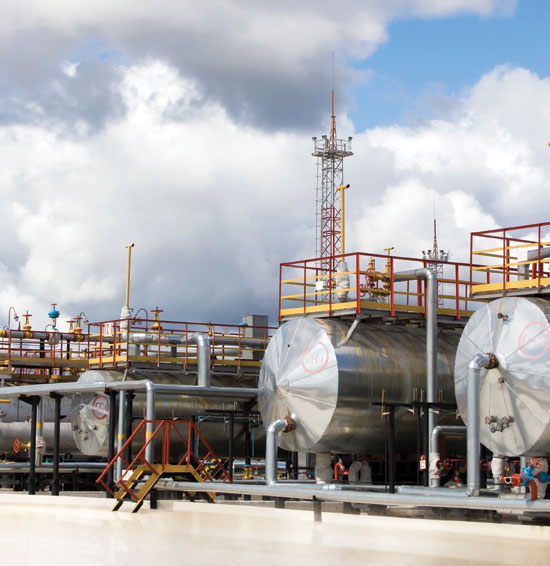 |
High-performing mixes perform in corrosive environments. Photo courtesy of Stonhard |
Resin Linings
Not as decorative as other resinous systems, high performing mixes that include epoxy, urethane, polyester, and vinyl ester perform under extreme physical conditions and provide lining protection for ultra-corrosive environments. Markets include pulp and paper, water/wastewater, chemical, food and beverage, and general manufacturing and parking garages.
Urethane Elastomeric Membrane
Durable, long lasting, epoxy and urethane-based waterproof membranes protect the surfaces of high pedestrian and vehicular traffic areas such as parking structures, ramps, stadium concourses, helipads, and pedestrian bridges. They are low maintenance and can stand up to harsh elements such as sun, salts, and corrosive fluids. Traffic bearing membranes are typically 60 mls to 80 mls thick.
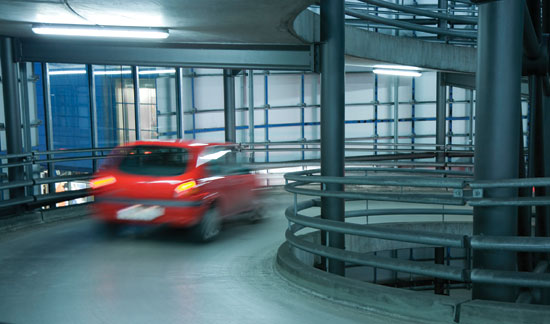 |
A urethane elastomeric membrane protects a stadium ramp. Photo courtesy of Stonhard |
Slip resistant, abrasion, fire and crack resistant, these membranes are also used to protect areas below mechanical rooms, pump and mezzanine floors from water damage. Reinforced with fiberglass an ultra-tough version can be specified for any indoor space that cannot tolerate moisture. Waterproofing membranes are typically 30 mls to 40 mls thick.
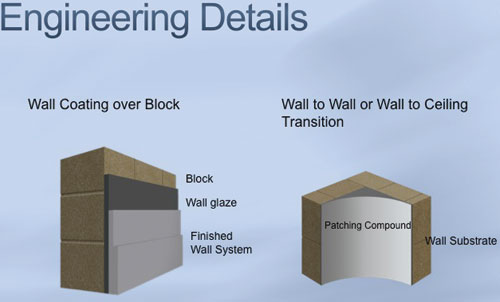 |
Engineering details of wall coating over block and wall transitions. Image by Stonhard |
 |
Details of resinous wall systems with and without wallboard. Image by Stonhard |









